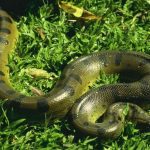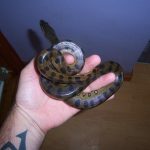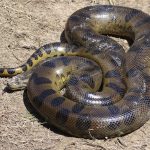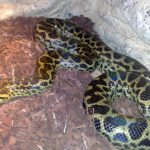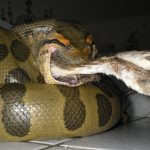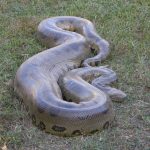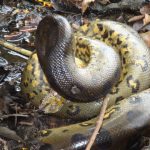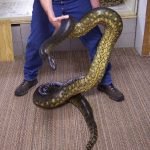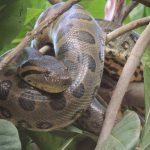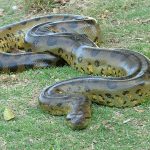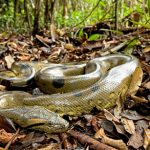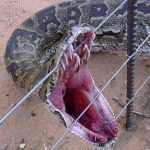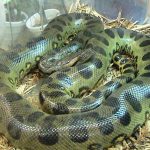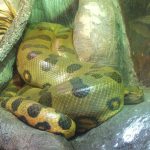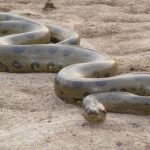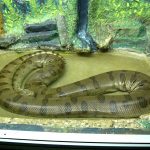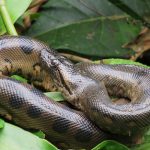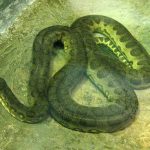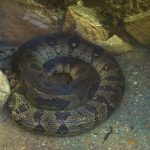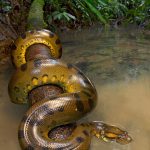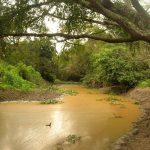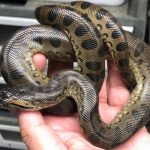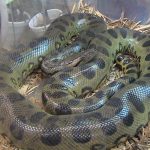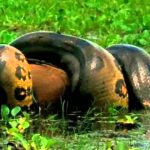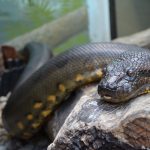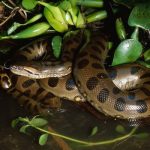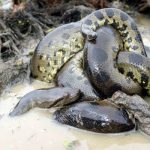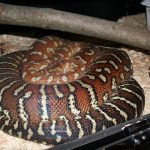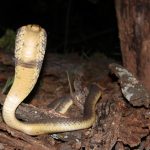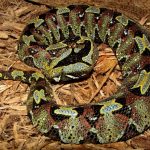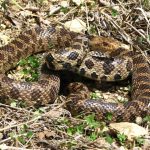Green Anaconda
Green Anacondas are heaviest and one of the longest snakes in the world native to South America. They are non-venomous and kill their prey by constriction. They are nocturnal and spend most of their time in or around water.
| Kingdom | Animalia |
| Phylum | Chordata |
| Subphylum | Vertebrata |
| Class | Reptilia |
| Order | Squamata |
| Suborder | Serpentes |
| Family | Boidae |
| Subfamily | Boinae |
| Genus | Eunectes |
| Scientific Name | Eunectes murinus |
| Other Names | Common Anaconda, Anaconda, Water Boa |
| Length | 5 – 5.21 m |
| Weight | 30 – 70 kg |
| Color | Olive green covered with black irregular spots; both sides of the head consists of marked orange-yellow stripes |
| Distribution | Colombia, Venezuela, Ecuador, Peru, the Guianas, Brazil, Bolivia, the island of Trinidad, northern Paraguay |
| Habitat | Swamps, marshes, and slow-moving streams, mainly in the tropical Amazon rainforests and Orinoco basins |
| Diet | Fish, birds, a variety of mammals, other reptiles, sometimes larger specimens consume tapirs, deer, capybaras, caimans, jaguars, cannibalism is known to be present among the species |
| Hibernation Fact | Undergoes aestivation |
| Predators | Young ones fall prey to caimans, jaguars, larger anacondas |
| Venom Fact | Non-venomous |
| Breeding Season | April-May |
| Mode of Reproduction | Ovoviviparous (producing young ones by means of eggs hatched inside the body of the parent) |
| Litter Size | 20 to 40 |
| Gestation Period | 6 to 7 months |
| Reproductive Age | Around 3 – 4 years of age |
| Average Lifespan | In Wild: Around 10 years In Captivity: Around 30 years |
| IUCN Conservation Status | Not Evaluated |
Green Anaconda Pictures Gallery
- Anaconda Green
- Baby Green Anaconda
- Common Anaconda
- Female Green Anaconda
- Green Anaconda Eating
- Green Anaconda Image
- Green Anaconda Images
- Green Anaconda Pet
- Green Anaconda Photo
- Green Anaconda Pictures
- Green Anaconda Snake
- Green Anaconda Snakes
- Green Anaconda Teeth
- Green Anaconda
- Green Anacondas
- Largest Green Anaconda
- Pictures of Green Anaconda
- Pictures of Green Anacondas
- The Green Anaconda
- Water Boa
- Eunectes Murinus
- Green Anaconda Habitat
- Male Green Anaconda
- Adult Green Aanaconda
- Green Anaconda Attack
- Green Anaconda Care Sheet
- Green Anaconda in Water
- Green Anaconda Mating


